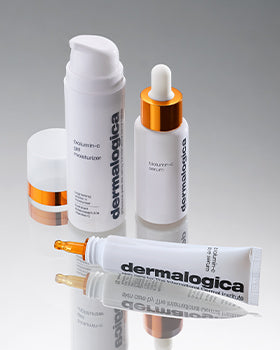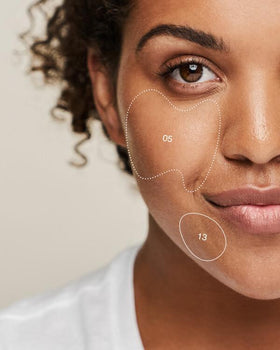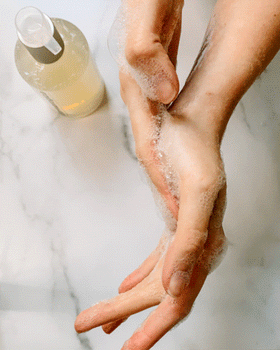Has your skin been dull, flaky or uneven lately? It could be related to environmental changes, allergies, sun damage, even stress — or it could just be because you're ageing. (Don't worry, it happens to everyone.) Fortunately, there is something you can do about it: exfoliate!
"We lose that 'youthful glow' as we age because our natural cell-turnover process slows down. This causes dulling dead skin cells to cling to our skin's surface longer," says Annet King, Director of Global Education for Dermalogica and The International Dermal Institute. "Exfoliation helps coax our inner glow back to the surface by removing all that dry, dull debris and revealing the softer, smoother skin underneath."
Exfoliating also helps targeted treatments and moisturisers better penetrate the skin; reduces breakout-causing congestion; helps smooth rough, callused areas; and helps prevent ingrown hairs.
"It really is one of the best steps you can take for your skin," says King.

choosing the right exfoliant
There are many forms of exfoliants, but the most common categories are at-home and professional.
At-home exfoliants (think scrubs, pads and brushes) tend to be relatively mild, inexpensive, quick and easy to use. Most of them, such as Daily Microfoliant® and MultiVitamin Thermafoliant™, rely on small particles to physically lift dead skin cells from the skin's surface. Daily Superfoliant, tend to smooth skin with hydroxy acids and enzymes, which dissolve and digest dead skin cells.

Professional exfoliants, such as Dermalogica BioActive™ Peel, usually remove dead skin cells with high-strength topical formulations of acids and enzymes. These exfoliants tend to deliver more powerful results after a series of treatments.
Which method is best for you will depend on your skin condition and concerns, as well as personal preferences, time and money. In general, the more sensitive your skin is, the less friction and frequency you'll want to use.
To find your ideal exfoliation method, see a Dermalogica skin therapist for a personalised prescription or compare our exfoliants.
quick tips
avoid abrasive scrubs
Skip scrubs made with sugar, salt or nuts as they can tear and irritate the skin. Instead, look for scrubs with Jojoba, Corncob, Rice Bran or microbeads in them. These are gentle enough for dry, ageing, sensitised or genetically sensitive skin. (If you have oily skin, consider an oil-absorbing scrub made of clays such as Kaolin or Diatomaceous.)
exfoliate in the a.m.
When exfoliating at home, it's best to do so prior to applying moisturiser, anti-ageing treatments, sunscreen or makeup. (Tip: Exfoliation can also help makeup last longer.) "Products applied directly to the skin after exfoliation can work more efficiently because the skin has been cleared of all that cell debris," says King.
everything in moderation
When it comes to exfoliation, more is not better. Over-exfoliating can cause dehydration and make the skin more prone to sensitisation, irritation, accelerated ageing and UV damage. Most people only need to exfoliate their skin a few times a week. If you prefer to exfoliate more often, use a mild exfoliant that is designed to be used daily.



